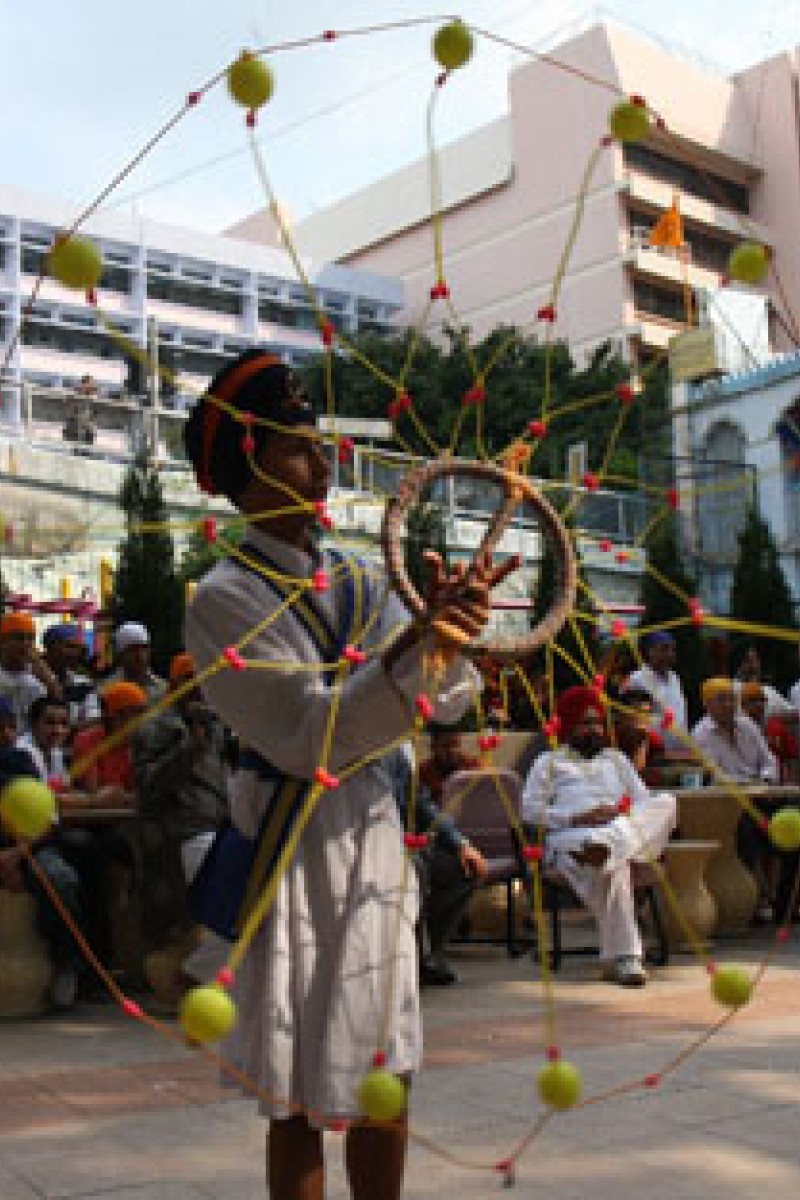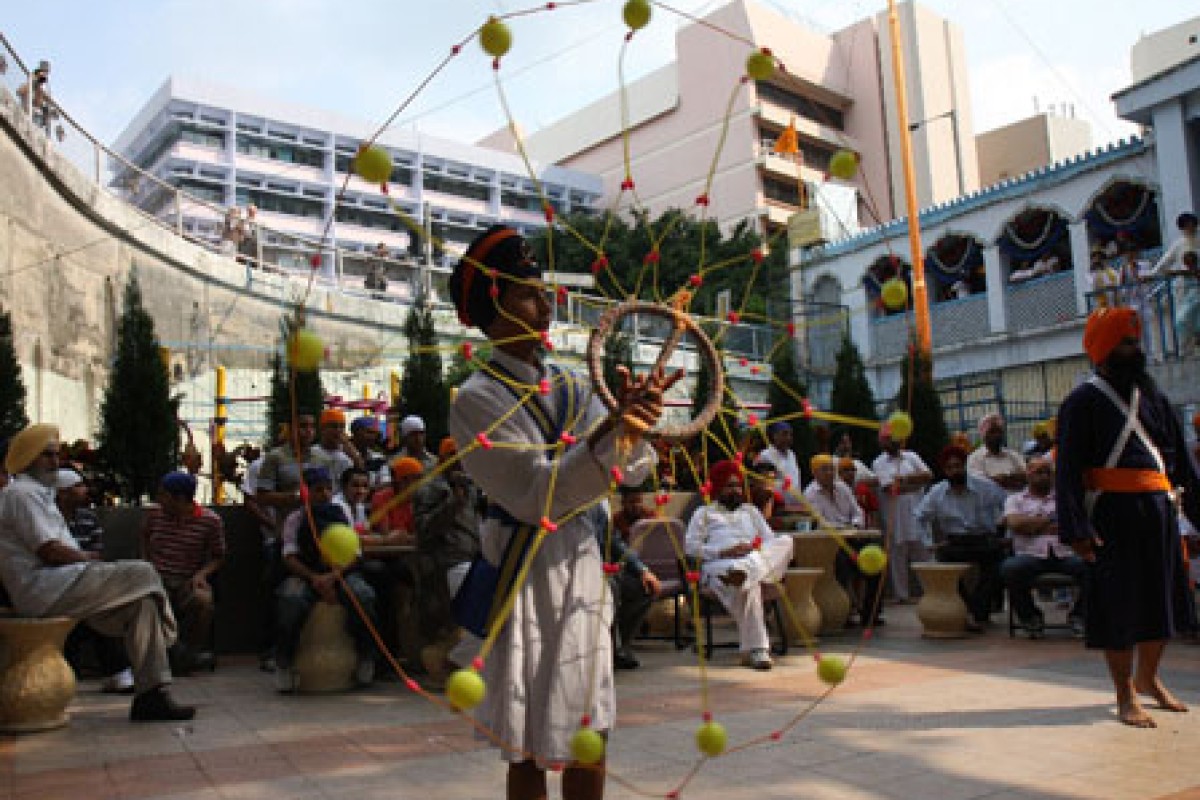
You may not have met a person who has never cut his hair throughout his entire life
 A Sikh devotee performs at the temple in Wan Chai
A Sikh devotee performs at the temple in Wan ChaiThere are about 25 million Sikhs in the world. About 80 per cent of them live in India and the remaining 20 per cent are spread all over the world. The majority of them live in Britain, the United States and Canada.
Sikhs are also not an unusual sight in Hong Kong. They are easily identified by their colourful turbans and unshorn hair and beards.
Sikhism was founded by Guru Nanak Dev, the first Sikh guru - or spiritual leader - in 1449 in northwestern India. It is based on his teachings, and of the nine Sikh gurus who followed him.
Sikhs believe in doing good actions rather than performing rituals. They are monotheists, which means they believes there is only one God. Idol worship is prohibited.
Sikhs arrived in Hong Kong from northwestern India in the 1840s. They were part of British armed forces. Sikhs were physically strong before the second world war, and they often joined the police force.
A Gurudwara (Sikh temple) was built in Wan Chai in 1901. Prayers begin there every morning at 4am. There is free food for visitors every day and everybody, irrespective of religion or background, can walk in to have free lunch and dinner.
The 'free kitchen' was the idea of Guru Nanak Dev and was aimed at encouraging integration among different faiths.
He also wanted to encourage people to rise above the caste system - a system of social division - serve the poor and encourage people to sit together.
'At least 100 people have food from our free kitchen on weekdays. On Sunday, about 1,000 devotees come to eat,' says Bhagat Singh, the Gurudwara's president.
At Sikhism's holiest place, the Golden Temple in the Indian city of Amritsar, about 50,000 people eat food in the free kitchen every day. There are hundreds of thousands on Sundays and religious festivals.
'There are about 10,000 Sikhs in Hong Kong,' Bhagat Singh says.
Sikhs have adapted well to Hong Kong. They can speak Cantonese, their children go to local schools and sometimes marry locals. Hong Kong Sikhs eat Chinese food and north Indian food, but they don't eat beef.
'It is very strange to see them speaking Cantonese rather than their own language among themselves,' says Yolanda Chong from Stanley, who recently went to a Sikh wedding in Hong Kong.
Palvinderjit Singh, a Form One student at St Paul's College, is a third-generation Sikh. He has never cut his hair and wears a small turban.
He speaks Cantonese, enjoys local food and studies Putonghua at school. Although he finds it difficult, he's confident he will learn it.
'Hong Kong is my home. I visit India with my family on vacations, but Hong Kong is the place I belong to,' says Palvinderjit, enjoying yummy curried fish balls.
Dhruv is a Young Post Junior Reporter
<!--//--><![CDATA[// ><!-- PDRTJS_settings_2292408 = { "id" : "2292408", "unique_id" : "default", "title" : "", "permalink" : "" }; //--><!]]>